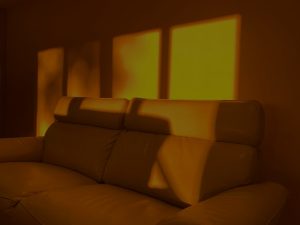**Abstract:**
Discover how to enhance your meditation experience with feng shui principles. This article explores practical tips for creating a serene space that promotes inner peace and mindfulness.
Transform Your Space: The Essence of Feng Shui
Feng shui, an ancient Chinese practice, emphasizes the arrangement of space to promote harmony and balance. When applied to meditation spaces, feng shui can significantly enhance your ability to connect with your inner self. The arrangement of furniture, choice of colors, and placement of decor all contribute to the energy flow in your meditation area. By understanding these principles, you can create an environment that fosters tranquility and supports your meditation practice.
Finding Balance: The Importance of Layout
The layout of your meditation space is crucial for achieving a balanced atmosphere. Begin by decluttering your area; a clean space allows for a free flow of energy, or “chi.” Position your meditation cushion or chair in a way that faces the door without being directly in line with it. This “command position” creates a sense of security and control, allowing you to focus on your practice without distractions. Additionally, ensure that your space is well-lit, using natural light whenever possible to enhance positivity.
Color Matters: Creating a Calming Palette
Color plays a significant role in influencing mood and energy levels. In feng shui, certain colors are believed to evoke specific feelings. Soft blues and greens can promote tranquility, while warm earth tones create a grounding effect. Consider painting your meditation space in soothing hues or incorporating colored accessories that resonate with your intentions. For example, a deep green can symbolize growth and renewal, making it an ideal choice for a space dedicated to self-discovery.
Natural Elements: Bringing the Outdoors In
Incorporating natural elements into your meditation space can enhance the overall ambiance. Plants are particularly beneficial as they not only purify the air but also introduce a sense of life and vitality. Choose low-maintenance plants like peace lilies or snake plants, which thrive in indoor environments. Additionally, consider adding water features, such as a small fountain, to create a soothing soundscape that promotes relaxation and mindfulness.
Personal Touch: Infusing Your Space with Intention
Your meditation space should reflect your personal journey and aspirations. Incorporate meaningful items, such as crystals, candles, or photographs, that resonate with your spiritual goals. For instance, amethyst is known for its calming properties and can enhance your meditation practice. By surrounding yourself with objects that inspire positivity and connection, you create a sacred space that encourages deeper reflection and growth.
Mindful Maintenance: Keeping Your Space Inviting
Regular maintenance of your meditation space is essential for sustaining its energy. Make it a habit to cleanse the area by removing dust and clutter, as well as rearranging items occasionally to refresh the flow of chi. Consider incorporating rituals, such as lighting incense or playing soft music, to enhance the atmosphere before each session. These practices not only keep your space inviting but also signal to your mind that it is time to enter a state of calm and focus.
Conclusion: Cultivating a Sanctuary for Inner Peace
Creating a meditation space infused with feng shui principles can transform your practice and enhance your overall well-being. By focusing on layout, color, natural elements, personal touches, and mindful maintenance, you cultivate a sanctuary that supports your journey toward inner peace. Embrace these practical tips to unlock the full potential of your meditation experience, allowing you to find your center and connect deeply with yourself.










